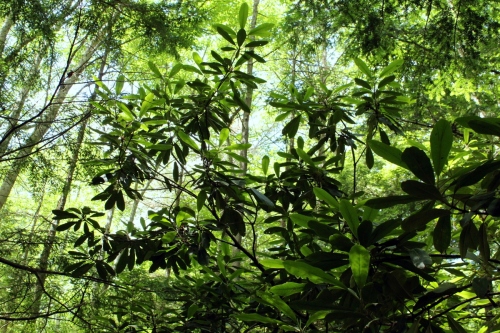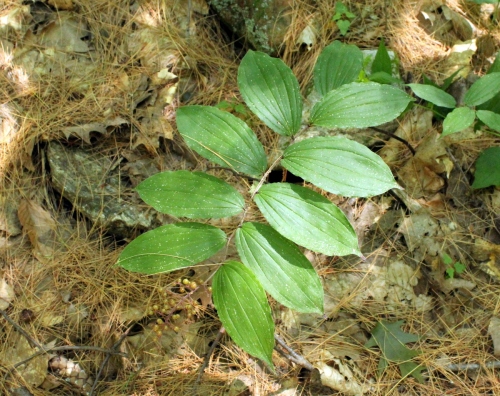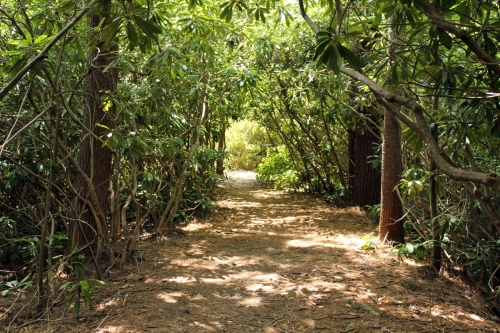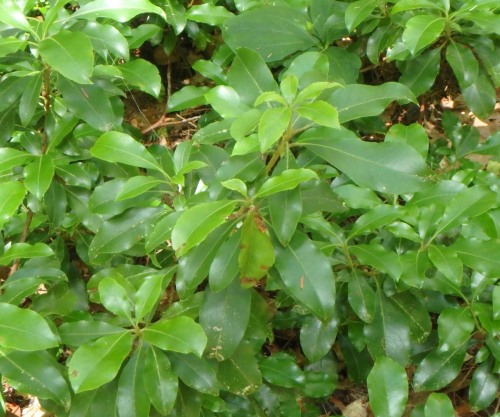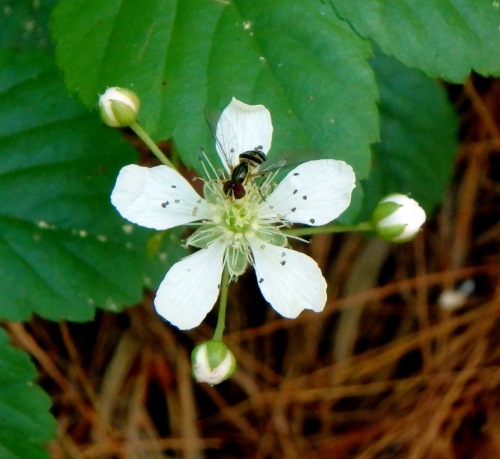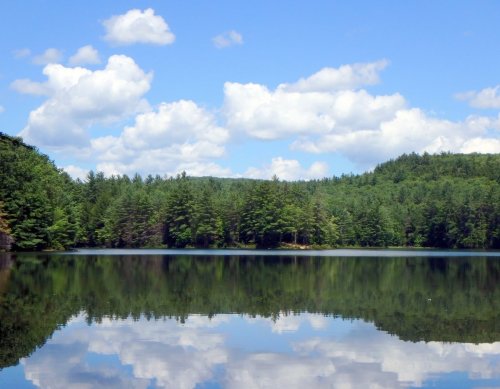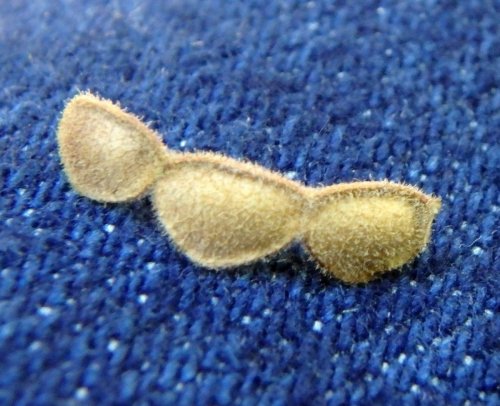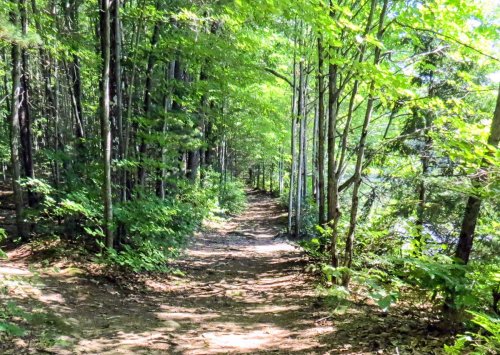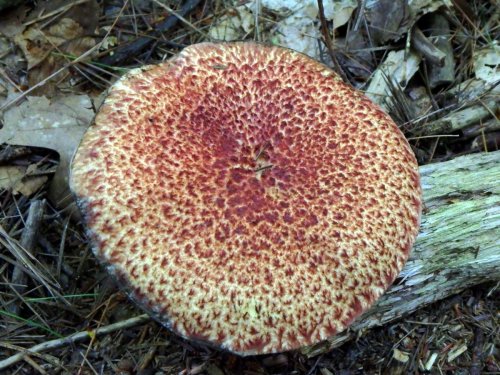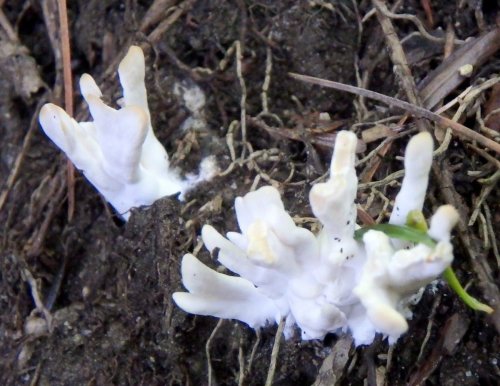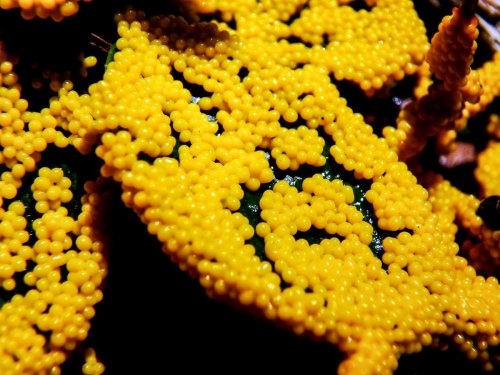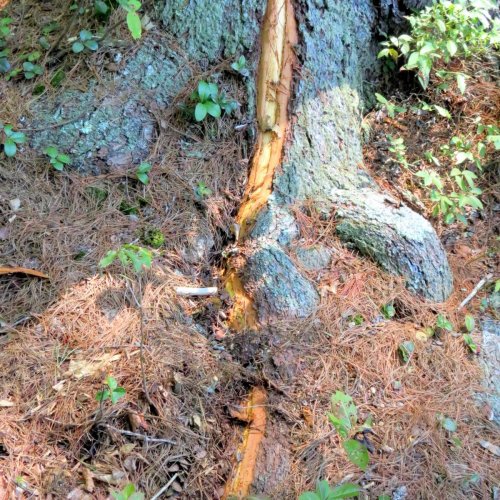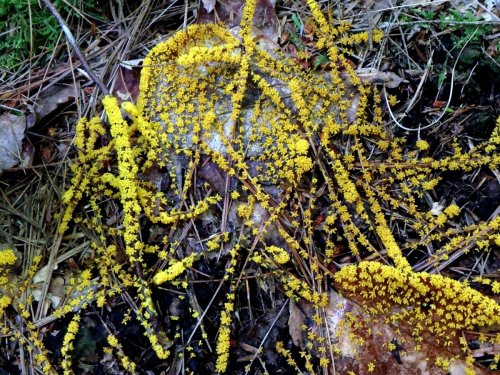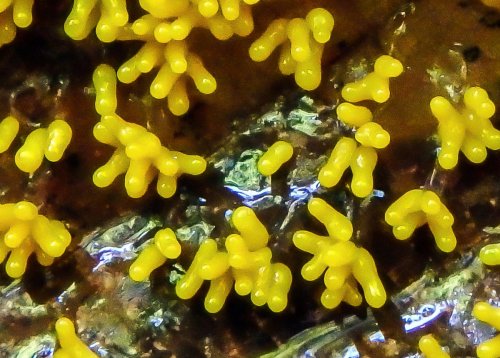Posts Tagged ‘White Coral Slime Mold’
Rhododendron State Park
Posted in Nature, Wildflowers, tagged Canon EOS Rebel T6, False Solomon's Seal Fruit, Fitzwilliam New Hampshire, Moth Mullein, Native Plants, Nature, New Hampshire, NH, Olympus Stylus TG-870, Rhododendron Maxima, Rhododendron State Park, Shinleaf, Summer Wildflowers, Troy New Hampshire, White Coral Slime Mold on July 17, 2019| 30 Comments »
I felt like lying down by the side of the trail and remembering it all. The woods do that to you, they always look familiar, long lost, like the face of a long-dead relative, like an old dream, like a piece of forgotten song drifting across the water, most of all like golden eternities of past childhood or past manhood and all the living and the dying and the heartbreak that went on a million years ago and the clouds as they pass overhead seem to testify (by their own lonesome familiarity) to this feeling.
Goose Pond
Posted in Nature, Scenery / Landscapes, Slime Molds, tagged Bolete, Canon SX40 HS, Cross Veined Troop Mushroom, False Coral Mushroom, Fungi, Goose Pond, Keene, Mushrooms, Native Plants, Nature, New Hampshire, NH, Olympus Stylus TG-180, Showy Tick trefoil, Slime Molds, Trichia varia Slime Mold, White Coral Slime Mold, Wild Mushrooms, Yellow Tooth Slime Mold on August 24, 2016| 46 Comments »
Regular readers of this blog no doubt know that we’re in the midst of a severe drought here in New Hampshire, but they might not know how the drought has affected this blog. In years past I’ve done regular mushroom posts at this time of year, but this year I haven’t found enough to do even one mushroom post. I recently had a professional mushroom hunter tell me that in thirty years of mushroom hunting he’s never seen such a lack of fungi, but I didn’t let that stop me from looking. I’ve always had good luck finding fungi at Goose Pond in Keene so on Saturday I decide to try. Surrounding the beautiful pond is a vast 500 acre tract of forest that has been left nearly untouched since the mid-1800s. It’s a wilderness area, and it’s just 2.6 miles from downtown Keene.
Goose Pond was called Crystal Lake by some in the 1860s, and was also known as Sylvan Lake in the 1900s. Keene had a major fire in 1865 and the town well and cisterns failed to provide enough water to put it out, so dams were built to enlarge the pond to 42 acres. Wooden pipe was laid to 48 hydrants by 1869. The city stopped using the pond as a water supply in the 1930s and in 1984 designated the forest as a wilderness park. Today it is mainly used by hikers, fishermen, swimmers, mountain bikers and snowshoers. This undated photo shows Goose Pond at what I’m guessing is probably the early 1900s, judging by the clothing of the woman and child. The gazebo to the right is no longer there. What impresses me most about this photo is how many of the trees had been cut down on the distant hill. Everybody burned wood in those days and it had to come from somewhere, I suppose.
There is a spillway that lets excess water out of the pond and it almost always has water running over it. Even with the drought it had a dribble of water on this day.
Showy tick trefoil (Desmodium canadense) grew beside the spillway. This plant gets part of its common name from the little barbed hairs that cover the seed pods and make them stick to clothing like ticks. The “showy” part of its common name comes from the way that so many of its small pink flowers bloom at once. As the plant sets seeds its erect stems bend lower to the ground so the barbed seed pods can catch in the fur of passing animals.
Or in this case, so they can stick to the clothing of forgetful humans. I leaned close enough to the plant when I was taking its photo to get its flat, sticky, segmented seedpods stuck all over me. Luckily I had plenty of opportunities to stop and take more photos and each time I did I picked a few off. You can’t brush them off; each one has to be picked or scraped off. By the time I’d made it all the way around the pond I had gotten almost all of them.
Though the start of the trail is flooded with light it gets dark quickly because of the huge pines and hemlocks along the water’s edge. I wonder if the lack of direct sunlight might have a lot to do with why there are often so many mushrooms here. The trail was muddy in places, even in such a dry summer.
I started seeing mushrooms almost immediately, starting with this big bolete. There were many examples of this mushroom along the trail and they were all quite big. The underside of the cap was yellow and had pores instead of gills as you would expect in a bolete and the stem was deeply furrowed. I thought it might be a painted bolete (Suillus pictus) but I can’t be 100% sure. It wasn’t at all slimy like many in the suillus family are said to be.
Cross veined troop mushrooms (Xeromphalina kauffmanii) are one of my favorites. They like to grow on hardwood logs or stumps in dark places so I always have to use a flash or an LED when I take their photo. Luckily my new camera has a built in LED so I don’t have to remember to carry one anymore. This mushroom usually appears in large enough numbers to look like a fungal army, and that’s where the name troop mushroom comes from. The cross veined part of the common name comes from the way the gills have tiny buttresses between them. The stem is always quite dark and the cap is orange yellow with slightly lighter gills, and less than an inch wide. There is an identical mushroom named Xeromphalina campanella which grows on conifer logs.
I think this might be false coral mushroom (Tremellodendron pallidum.) It’s called false coral because it’s actually one of the jelly fungi. This fungus starts life resembling bird droppings and develops into the shape seen in the above photo as time goes on. As it further ages it will lose its white color and become another color that will be determined by what it grows on. I’m guessing if it grew on soil like these examples it might turn brown.
There are 3 smallish streams you have to cross as you make the circuit around the pond and well-built bridges help you get across. On this day this and another bridge weren’t needed because the streams had dried up. In fact I was standing in what would have been the stream when I took this photo.
I didn’t think we’d had enough rain from passing thunderstorms for slime molds and didn’t expect to find any, but here they were. This orange one was about as big as a baseball, or about 3 inches across. I think it might be Trichia varia, which as far as I can tell has no common name. When slime molds run out of food-bacteria and yeasts-they literally begin to move and can often appear web or net like. They form streams of cells called pseudoplasmodium and move at about one millimeter per hour. Once they come together into a mass the cells change their shape and can form stalks that are capped by fruiting bodies. A fruiting body can look like jellybean or sphere shapes, or can sometimes resemble blackberries, hair, dripping wax, and other shapes bizarre enough to be from another planet.
The plasmodial slime mold in the above photo, like many others, moves using cytoplasmic streaming, which is basically a contracting of “muscles” by all of the separate cells until they come together in a single mass. They then shift from the growth to the fruiting stage. Slime molds die if they dry out, so most of this usually occurs at night or on damp, humid days after a rain. The bright color of this one made it easy to see.
The separate amoeba-like fruiting bodies that made up this slime mold were spherical. Each one is probably about the same diameter as the head of a common pin, or even smaller. Though some people think they’re “yucky” slime molds are a very important part of the workings of a forest and I find them both fascinating and beautiful.
When I saw something that looked like white powder on a log I knew it had to be another slime mold. There are a few different white coral slime molds (Ceratiomyxa fruticulosa) and they come in different shapes, from finger like to geodesic dome shaped. I put the penny there to give you an idea of how small this slime mold is. The smallest ones would have fit in Abe Lincoln’s ear. I was able to simply push the penny into the log because of how rotten it was. It was also soaking wet.
The coral slime mold likes to grow on wood in dark, moist places, such as the underside of a log. If you should happen to see what looks like white dust or paint on a log there’s a good chance that it’s a slime mold. You’ll want a loupe or a macro lens to see any real detail.
The pond has a small island in it and I was wishing I had a kayak with me so I could explore it. When I tried to take a photo of it from the other side so the sunlight wasn’t coming directly at me the island blended into the shoreline and all but disappeared, so we’re stuck with this harsh, backlit view.
I’m guessing that this white pine (Pinus strobus) must have been hit by lightning. The scar on it ran from about 20 feet high right down into the ground. It didn’t look man made and didn’t look like a frost crack. In my experience a tree hit by lightning explodes into splinters, but I can’t think of any other way this scar would have formed. It was also recent.
The scar followed the trunk downwards and then followed one of the largest roots into the ground. There were long strips of bark lying around, but they weren’t burnt. I’ve never seen anything like it so I looked for something similar in Michael Wojtek’s book Bark, but apparently he’s never seen anything like it either. This is another head scratcher that will have to go into the nature’s mystery pile.
Before long I saw another large slime mold. This photo shows how slime molds, even though sometimes covering a large area, are actually made up of hundreds or thousands of single entities. These entities move through the forest looking for food or a suitable place to fruit and eventually come together in a mass. I think this one might be spreading yellow tooth slime (Phanerochaete chrysorhiza.)
These are the sausage shaped “teeth” that make up the spreading yellow tooth slime mold. They are fruiting bodies that will release the thousands of spores they’ve produced on their surfaces to be dispersed by the wind. They are so small that they are rarely able to be seen with the naked eye.
When you’re in a forest getting a photo of it is harder than I ever thought it would be. I tried many times to get a photo that would show you what it was like but it never worked until I found this spot a year or two ago. A large tree fell and opened up the canopy to let in enough light to get a fair photo of what these New Hampshire woods are like. They can be dark and close like these are or sometimes more light and open. There is obviously something about this particular forest that mushrooms and slime molds like.
I didn’t see any geese in Goose Pond but I saw many other amazing things that made the hike an enjoyable one. If you happen to be a local nature lover, this is a hike that you really shouldn’t miss. At a normal pace it takes about 45 minutes to an hour to make it all the way around but if you like to stop and look at things it could take a bit longer. It took me about 4 hours.
The wilderness holds answers to more questions than we have yet learned to ask. Nancy Wynne Newhall
Thanks for coming by.






